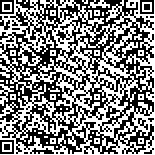Abstract:Traditional machine learning methods are easily influenced by subjective experience during feature extraction,which leads to low recognition accuracy of underwater acoustic targets. However,deep learning algorithm models are relatively complex,which usually have the disadvantages of time-consuming training and high computational complexity. Extreme learning autoencoder has strong non-linear processing ability,which is suitable for recognition of underwater acoustic signals with nonlinear characteristics. Moreover,the model has significant advantages such as fast learning speed and strong generalization ability. In this paper,the extreme learning autoencoder algorithm is applied to underwater acoustic signal recognition,and is compared with convolutional neural networks,autoencoders,and extreme learning machine recognition methods. The results show that the proposed method has the best accuracy in target recognition of underwater acoustic signals and needs shorter training time.


